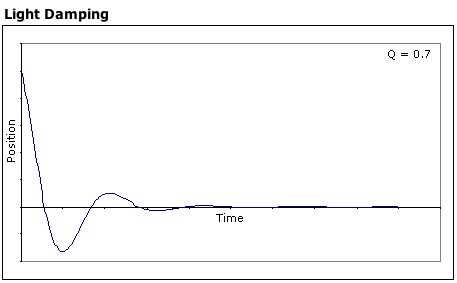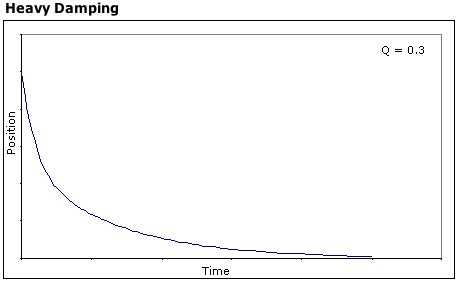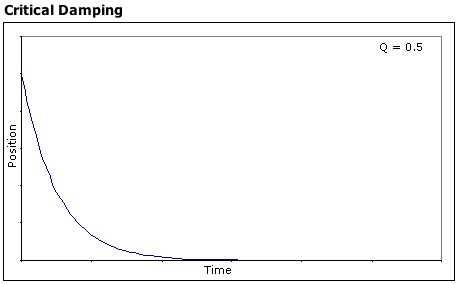
| |||||||||||||||||||||||||||||
| | Thread Tools | Search this Thread | Display Modes |
| | #11 | |
| Quote:
Correct, the measurement is taken with the swingarm fully extended. Ride Height Adjustment The rear ride height is set at the factory to assure the correct weight distribution and the proper fork angle. Ducati uses a fixture (ride height tool) that mounts to the frame at pick-up points that are fixed relative to the swingarm pivot point when the frame is welded. The distance to his fixture from the center of the rear axle (with the suspension fully extended i.e. no weight) is then adjusted by changing the length of the ride height adjustment tie-rod to increase or decrease the ride height. With the swingarm fully extended, the distance from the tool (datum line) to the center of the axle should be 237 mm. The tie-rod is lengthened or shortened to get this number. The factory ride height specification is satisfied when the tie-rod measures 261 mm between pivot bolt hole centers. First, measure the distance between the two ends of the tie-rod and record this length. Then when you change the tie-rod length, you have a record that allows you return to the factory setting or a previous setting. Length changes should be made in small 5-10 mm increments because the way the bike turns and holds a line is quite sensitive to the rear ride height. As a rule, the more rear ride height you add, the faster the bike will turn. The ride height is set to let the bike turn quickly without falling into corners, or requiring rider input to hold a line. The tie-rod is adjusted using 17 mm and 19 mm wrenches. The bottom nut is a left hand thread and the top nut is standard. You turn both nuts the same way to loosen them. So, you only have to loosen the top nut, and then turn the rod in the reverse direction (i.e. unscrew the rod from the nut) to raise the ride height. The corsa rod has flats to make this easier. Finally, reseat the LH lower nut and tighten the upper nut. When the bike sits on its suspension, the height that the rear bodywork sits relative to the rear axle is affected by manufacturing and installation tolerances of the rear subframe and the clock-position of the rear hub eccentric chain adjuster as well as rear spring preload and tire size/wear. This prevents you from establishing a different ride height reference value measured to a reference (datum) point on the bodywork itself. If you haven’t made any changes yet to your rear spring preload, or adjusted your chain tension then you are still set-up to factory settings. So, following the first rule of making suspension adjustments, you should first measure your initial settings and record all changes. This is the only time (without using the ride height tool) where you can establish a (factory) pseudo-datum at a different location on your particular bike’s bodywork to which you can measure the distance to the rear axle. Another same-model bike will have a different dimension to this datum even though both bikes have the correct ride height. Once you have established a new bodywork location (unique to your bike) from which to measure ride height, then you can measure all future changes to ride height from this datum. So you won’t need to use the Ducati ride height tool as a reference datum. Again, this measurement is made with the suspension fully extended. You should also continue to record the changes to the tie-rod length to make it easier to return to your previous settings, if need be. | ||
| | #12 | |
| Registered Forum User Ducati Corse Bikes: Monster 1100 EVO Posts: 3,969 Join Date: Jul 2003 Location: lincoln Mood: I'm A Grandad again :-) Quote:
Thanks for clearing that up for me  Chris  | ||
| | #13 | |
| Quote:
The extended reading is ideally taken with the rear wheel lifted off the floor, not that easy to do with just one helper. The figure I use is 242mm fully extended and 232mm with unloaded sag. I did try the 245mm extended with 10mm of sag that was recomended to me by a couple of SoT runners (one won the Superclub championship and the other was runner up in the Bemsee championship). but prefered it a bit lower, maybe my front rideheight is also a bit lower than theirs. Checkout the Desmo Due Paddock on Facebook | ||
| | #14 | |
| Quote:
Back to the original question...... Any suggestions? I'm thinking that a bit more compression damping on the shock might be in order, with a view to stopping the rear squatting or, conversely, the forks extending, on acceleration from the exit in an attempt to reduce the likelihood of tankslappers. On the right track, or barking up the wrong tree? | ||
| | #15 |
| Wrong tree. The idea here is to set up the bike's damping to handle the road surface properly, not to lock up the suspension so that the bike's pitching motion is restricted. When you adjust your suspension, what you’re trying to achieve is what’s called critical damping. A critically damped system approaches equilibrium as fast as possible without any overshoot or oscillation. This is a very desirable attribute in many mechanical and electrical systems. If there’s not enough damping, the system takes a number of oscillations before reaching equilibrium. If there’s too much damping, there’s no oscillation but the system takes too long to reach equilibrium.  When the suspension doesn’t have enough damping, the bike feels unsettled because it takes a number of bounces (oscillations) before the suspension settles back down (reaches equilibrium) after hitting a bump.  When the suspension has too much damping, the bike feels stiff and unyielding because it takes a long time before the suspension recovers from hitting a bump. If you hit a second bump before recovering from a first, the suspension “packs-up” and transmits higher impact forces to the bike and rider, and the wheel has more difficulty tracking pavement irregularities.  This is what you want. A critically-damped suspension system approaches equilibrium as fast as possible without any oscillation, and in the shortest time, after hitting a bump. This is best because it give a rapid recovery without producing either a harsh or bouncy ride, and will gives the best wheel tracking of uneven road surfaces so as to maximize the time in contact with the road. This maximizes tire grip in corners. You'll just have to let your steering damper do it's job if you get a tankslapper. | |
| | #16 | |
| Registered Forum User Ducati Corse Bikes: Monster 1100 EVO Posts: 3,969 Join Date: Jul 2003 Location: lincoln Mood: I'm A Grandad again :-) Quote:
What height above the top yolk would you recomend the fork tops to be with showa forks Kev??? with Mag swinging arm & with standard swinging arm. Chris  | ||
| | #17 | |
| Quote:
Only my 996 has Showa forks and they are in adjustable offset Robby Moto Yokes so none of the figures tally up. Setting a fork height through the top yoke is playing with the front ride height which is the same as adjusting the preload, so unless you are at one end or other of the preload adjustment try playing with that first, if you prefer it wound right in then have less fork coming through the top yoke back off the preload and start adjusting again. if its backed right out let more fork (about an extra 10mm) through the yoke, add some preload and then start adjusting again Checkout the Desmo Due Paddock on Facebook | ||
| | #18 | |
| Quote:
If the rear squatting is a problem and the rear ride height is maybe a bit lower than ideal, you may find the weight bias is favouring the rear and transfering to and fro under acceleration and braking a bit more than you want, possibly because the rear spring is having to carry a higher percentage of the weight. You may find a slightly stiffer spring will help. Checkout the Desmo Due Paddock on Facebook | ||
| | #19 | |
| Quote:
Thanks. The rear isn't squatting noticeably, and the rear ride height actually seems to be slightly higher than how I recall my 748BP and 996S to have been setup. I haven't measured it - I'm just going by memory. I'm just canvassing opinion on what, if any, changes people who are running the steeper head angle have made to complement (or make up for deficiencies in) the different steering geometry. However, Shazzam has clarified the issue relating to controlling/avoiding tankslappers by holding the rear up. | ||
| | #20 |
 Recently adjusted head angle to the track setting on my 748r after years of jacking the back up to get it to turn. Reduced the rear by 10mm to compensate, rear was very high but only have my own reference setting for this, left all other setting as before. The handling on the track is superb with great feel and confidence from the front end. Wouldn’t recommend this for the road, the turning lock is reduced, almost dropped it in the paddock when I unexpectedly hit the lock stop! | |







 Linear Mode
Linear Mode

